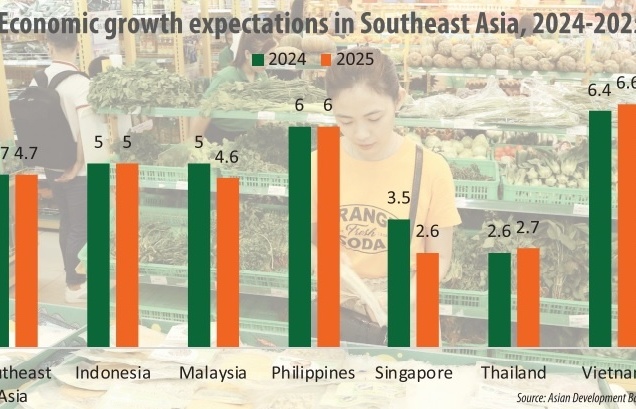Going local to provide rich benefits
 |
| illustration photo |
Japan-backed sewing machine manufacturer and trader Juki Vietnam Company Limited in Ho Chi Minh City’s Tan Thuan Export Processing Zone recently announced a plan to hike the localisation rate to over 40 per cent this year from 8 per cent, of which made-in-Vietnam materials and components make up 25 per cent.
“Since most of the materials are imported, the production cost of made-in-Vietnam components is often higher that that imported by other firms within the group despite Vietnam’s competitive labour costs,” he said.
According to Siemens Vietnam Company Limited, 70 per cent of materials to produce bus bars - one of its chief products - are provided by Vietnamese firms while the remaining 30 per cent must be imported.
Siemens Vietnam’s chairman and general director Erdal Elver said quality, timeliness and pricing factors were top priority in choosing local suppliers.
As with Robert Bosch Vietnam, it has to import half of raw materials for producing push-belts used for vehicles employing continuous variable transmission (CVT) technology in its Long Thanh Industrial Zone (IZ) plant in southern Dong Nai province and it expects to entirely localise the product in 2012.
About why choosing that date, Robert Bosch Vietnam chief executive officer Vo Quang Hue said a manufacturer needs to well prepare three factors of human resources, equipment and materials if it wants to successfully localise a product. RB Vietnam expects 2012 will be the right time for the firm to entirely localise push-belt products to meet burgeoning export market demands.
Hue said localisation would bring the firm greater benefits since most of its customers came from Asia.
The firm’s manufacturing plant in Long Thanh IZ currently turns out 1.6 million products per year which will jump to 2.3 million items per year by 2015.
What the stars mean:
★ Poor ★ ★ Promising ★★★ Good ★★★★ Very good ★★★★★ Exceptional
 Tag:
Tag:
Related Contents
Latest News
More News
- Remarkable outcomes can be earned (December 25, 2024 | 11:00)
- Trade scope expands with British accession to CPTPP (December 25, 2024 | 10:00)
- Nghe An boasts workforce potential for industrial growth (December 25, 2024 | 08:30)
- Localities implement solutions for semiconductor projects (December 23, 2024 | 15:00)
- UK's Pharos Energy obtains licence extensions (December 23, 2024 | 14:41)
- Australia relationship has never been better (December 23, 2024 | 11:00)
- Tech goals require teamwork (December 23, 2024 | 10:34)
- Dong Thap pioneers ecosystem for startup businesses (December 23, 2024 | 09:35)
- Japan's Sojitz and Vinamilk put beef processing plant into operation in Vinh Phuc (December 19, 2024 | 16:20)
- Sanofi brings world’s first modular concept manufacturing facility to Singapore (December 19, 2024 | 16:17)

















 Mobile Version
Mobile Version